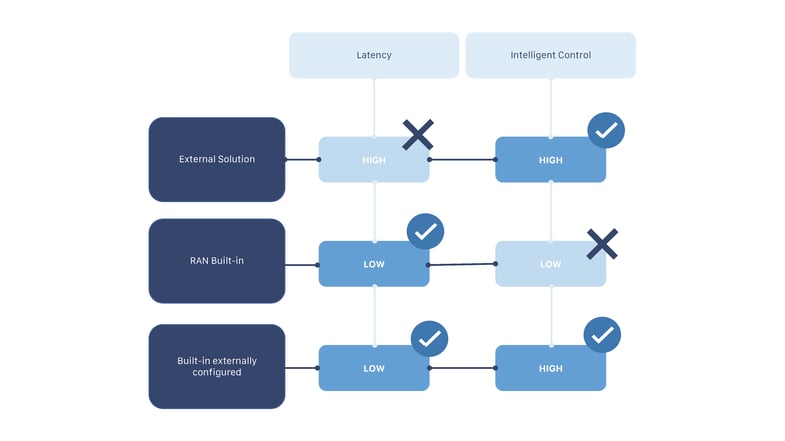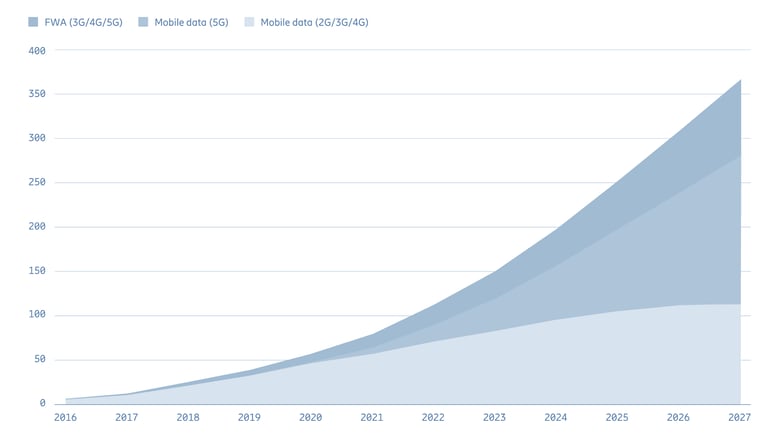Telecom operators are some of the biggest energy users in the world, responsible for up to 3% of energy demand around the globe. Unsurprisingly, telecom energy usage—and the carbon footprint it leaves behind—is predicted to grow along with the rise in 5G technology and the increased traffic it is expected to bring. Power savings in mobile networks is becoming a clear priority for most operators due to several obvious reasons: Energy prices are soaring, good corporate citizenship requires green initiatives, and there is significant room for improvement in optimizing the existing power savings features (PSFs) usage.
The technological building blocks are there: Extensive power savings features provided by original equipment manufacturers (OEMs), artificial intelligence (AI)-based agile decision-making machinery, and a way to measure and mitigate customer impact. However, putting all these technologies together and easily applying operator-specific strategies 24/7 in a multi-vendor and multi-technology environment is not trivial.
The Current Situation
In the last couple of years, we have seen an increasing amount of news from operators on green initiatives, including more power-efficient products being sourced from OEMs. In fact, earlier years between 2015 and 2021 have been heavy on modernization of base stations, which are known to be the main culprit of high-power consumption (source: GSMA).
Figure 1: Global Mobile Network Data Traffic (EB per month)
According to this same resource, energy costs constitute between 20% to 40% of all network OPEX accounting for an estimated 3 billion USD per year in the US and 7 billion in Europe (estimation based on Tupl’s experience and report by Cable.co.uk). Also, from the mentioned GSMA study based on data from seven operators, radio access network (RAN) consumes 73% of energy, while 13% is consumed for core, 9% for data centers, and 5% for the rest. While there is a significant effort in optimizing data centers and core network power usage, the RAN matters the most.
Costs are not the only concern, however. Telecom operators already account for 2 to 3% of total global energy demand, often making them some of the most energy-intensive companies in their geographic markets. As operators’ energy consumption expands, so will their carbon footprint, hurting not just the environment but also their reputation, particularly among the expanding class of socially responsible investors (source: McKinsey).
But this does not have to be the case. All mobile operators have considerable scope to cut energy costs and consumption. In current mobile networks, for example, transferring data only consumes around 15% of energy. Some 85% is wasted because of heat loss in power amplifiers, equipment kept idling when there is no data transmission, and inefficiency in systems such as rectifiers, cooling systems, and battery units (source: McKinsey).
Currently, it is estimated that only around 16% of networks have any activation of OEM’s PSFs: These are defined as a piece of software in one or more types of RAN elements that provides specific functionality to reduce the energy consumption compared to the default performance of the equipment.
Why are Mobile Network Operators (MNOs) Not Using PSFs to Their Full Extent?
We can mention three main reasons why mobile operators might not be using PSFs:
- Traditional Focus on RAN Performance: MNOs have traditionally put all their effort on RAN performance, competing to be the top performers in their respective markets’ This focus pushed the already developed OEM’s radio PSFs into the background. Most MNOs have been reluctant to activate radio PSFs at all, as almost all engineering departments are measured only by network key performance indicators (KPIs). In the case of PSFs, there is always a lingering doubt about whether there is an impact on the performance.
- Transition from Legacy Technologies: Another issue is the transition between technologies, which discourages the investment of energy saving efforts in, on the one hand, technologies that will soon be disconnected (3G before 2G), and on the other hand, in new technology (5G) whose current focus is on deployment and market
- Lack of Optimization of PSF Capabilities: Finally, there is a more advanced matter, which is PSF optimization. It is possible to have PSFs active at every RAN site but, like any other radio feature, most of them are activated with default settings. This one-size-fits-all approach may be conservative enough to create confidence that no single site or cluster is degraded across the entire network, but it falls short in most sites in the energy savings target.
Due to these reasons, there is a huge potential for energy savings by ensuring that all possible actions are implemented and optimized. There are currently up to four technology generations consuming energy: Even if some of them are going to be switched off soon, it is possible to cut down the consumption starting today.
What is the Ideal Solution for Controlling Energy Consumption?
There are some recommendations that are worth discussing to maximize the use of PSFs. These recommendations are based on three essential concepts:
AI is the Way
As stated in a NGNM report:
“Here, Artificial Intelligence (AI) could play an important role. By predicting and learning the traffic behavior, AI algorithms define the activation/deactivation of sleep mode functionality and site energy management without impacting the overall performance, including Quality of Experience (QoE). AI is still in an early phase, and more development and research are needed to reach its full potential. AI-based energy saving solutions can greatly increase the energy performance of cellular networks.”
Low Latency
On-demand resource allocation requires minimum latency between the data collection that characterizes the current state of the system, the execution of the decision-making process, and the implementation of the corresponding action in the network. Low latency in this observation-reaction cycle leads to a responsive network adaptation to traffic changes that ensures a minimum power consumption without impacting the user experience. For instance, when user traffic starts to increase significantly, then additional radio resources are seamlessly enabled.
Dynamic and Multivendor Orchestration
Another advantage of this ideal approach is the continuous orchestration of the different possible actions to take. The selection, sequence, and timing of actions are essential to maintaining the goal of optimally reduced energy consumption with no impact on the customer network quality. Furthermore, an open orchestrator approach allows any MNO to implement their own power saving strategy, such as different levels of aggressiveness between technology and frequency layers.
Lastly, multivendor management is key to both simplify the power saving process, and measure continuously the performance of the OEMs. In fact, multivendor approach has already proved to improve OEMs’ proprietary software for PSFs.
We can affirm that low latency (the assessment of the time it takes a solution to react to traffic pattern changes by activating or deactivating RAN resources) and intelligent control (the ability to adapt the energy saving decisions to the characteristics of each network element to maximize the overall energy reduction) are the two key pillars for an ideal save energy automation solution.
The strategy to achieve more energy savings and better network performance and customer experience should have a good balanced performance of these two elements (see table below). Out of the several approaches one could take to energy savings in network operations, we affirm that the best strategy is a RAN built-in configured by non-real time external solution: In this solution, there are two main sub-processes involved: OEMs’ PSFs, and an external system that continuously configures them in a cyclic, non-real-time manner.
 On the one hand, the PSFs ensure rapid execution of the observation-reaction cycle. This would be an inner-loop control. On the other hand, the non-real time external system configures those radio features in such a way that the power savings are maximized in each network element, keeping the user experience. This would be an outer-loop control.
On the one hand, the PSFs ensure rapid execution of the observation-reaction cycle. This would be an inner-loop control. On the other hand, the non-real time external system configures those radio features in such a way that the power savings are maximized in each network element, keeping the user experience. This would be an outer-loop control.
As a matter of fact, there are already examples of operators that are already implementing such approaches, such as Kyivstar in Ukraine. Kyivstar was looking for a power saving solution that could guarantee no impact on the customer experience, but which also had a transparent system where engineers could verify the AI-based decisions: A system to provide anomaly detection on any deviations on KPIs and customer experience, and automatic actuation scripts for activation/deactivation of the PSFs. Last, but not least, the solution needed to be able to operate in their multi-vendor and multi-technology environment. After applying AI to automate PSFs, the hourly shape of the energy consumption decreased by more than 15% compared to the baseline for Kyivstar.
Conclusion
The telecommunications industry is starting to consider energy efficiency more seriously and taking steps to reduce the impact of high energy consumption, such as using renewable energy sources. Undoubtedly, AI is and will be the key technology enabling power savings. The AI-driven software approach will be the catalyst to the fundamental change in this domain, ensuring control and reduction of energy consumption. All this needs to happen without impacting the customer experience. It is already possible today to achieve this with proven technology: AI-based solutions are available on the market for immediate implementation. Every month that passes is a missed opportunity to serve the planet and serve the shareholders of the MNOs, so let's make sure we act now!
Editor's note: This blog has been edited and repurposed from Tupl's white paper of the same name, which you can access here.





